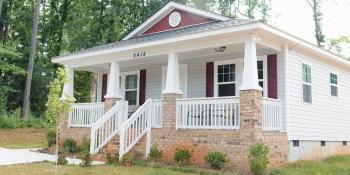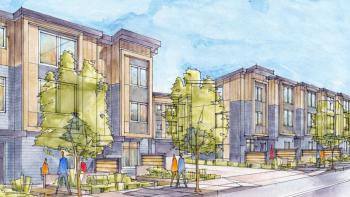
Community development financial institutions
What they are and why they matter
Without equitable access to affordable credit and investment capital, people living in low-income communities often face barriers to quality housing, education, health care, jobs and other essential services. Community development financial institutions, or CDFIs, can reduce those barriers by unlocking access to basic financial services for those traditionally excluded by mainstream financial systems.
In 2017 Habitat for Humanity International established Habitat Capital as our own CDFI. Together with local Habitat affiliates, some of which have decades of experience operating as or like CDFIs, we are increasing affordable homeownership through providing flexible capital, mortgage origination support and financial services. In this explainer, learn more about how CDFIs improve housing and livelihoods in underserved neighborhoods.
What are community development financial institutions?
CDFIs sprang onto the financial scene in 1977 following the passage of the Community Reinvestment Act, which encouraged financial institutions to serve low- and middle-income people who had been systemically excluded from equitable and basic financial services through practices like redlining. Further laws enacted by the U.S. Congress — namely the Riegle Act of 1994, which created the CDFI Fund — have reinforced the importance of CDFIs in American banking.
CDFIs are mission-driven financial institutions that serve low-income communities and residents across the U.S. who often lack access to financing. Where traditional banks might see risk when reviewing loan applications from low-income individuals, CDFIs see opportunity.
CDFIs partner with underserved businesses and individuals to spur growth at the community level, using a holistic and people-centered approach to inject much-needed capital and financial services into disinvested areas.
The collective impact of CDFIs nationwide has created millions of jobs, jump started businesses, increased affordable housing availability and expanded community facilities.
The four types of CDFIs
Though CDFIs share similar tenets, they operate in different ways. There are four types of CDFIs:
- Community development banks are federally insured for-profit institutions that operate much like a traditional bank, though they carry an imperative to direct a minimum of 60% of their financing to distressed communities.
- Community development credit unions are nonprofit, member-owned cooperatives that offer credit counseling, business planning and other basic financial services to low-income individuals often living in underprivileged communities.
- Community development loan funds provide financing and development services for microenterprises, small businesses, housing development and community service organizations. This is the most common type, representing more than half of all CDFIs.
- Community development venture capital funds pool money from investors to finance small businesses that improve community and economic development goals while also yielding financial returns. This is the least common type of CDFI, making up just 1% of all CDFIs.
Scalable impact: CDFIs at work
In 2020, 4.6 million clients were served by one of more than 1,000 CDFIs operating in the U.S., according to an annual impact survey conducted by the CDFI Fund. These community-based financial institutions are critically reaching the people who need capital the most. A survey of 269 CDFIs who are members of Opportunity Finance Network revealed that the clients they served in 2020 were:
- 84% low-income, low-wealth or historically disinvested individuals.
- 60% people of color.
- 50% women.
- 27% rural borrowers.
CDFIs, including those operated by Habitat, enable low-income individuals to access the basic financial services that can propel them out of poverty and into life-changing positions like homeownership and financial independence. They are mainstays for under-resourced communities and will continue to be a valuable investment, creating financial access for their neighborhoods and residents.
